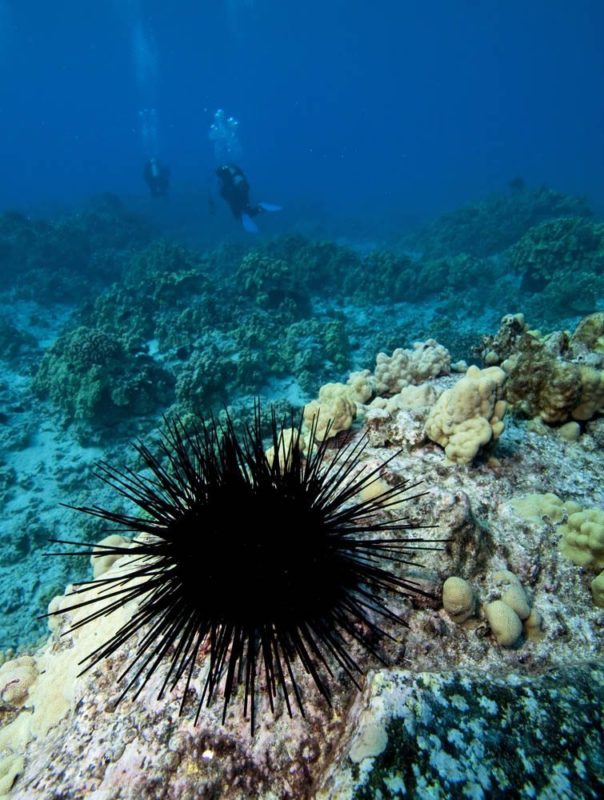Last Updated on July 10, 2024 by Snorkel Ken

Snorkel tour operators are often asked a lot of questions by patrons that want to later set out into the sea themselves. Mostly it is basic questions like fishing for tips on how to keep the mask from fogging up or clearing water from their snorkel tube. Typically, it is the questions that all beginning snorkelers must ask someone at one point or another. However, even advanced snorkelers seek answers to one important question. When is the best time to snorkel?
The answer is tricky and often location-dependant. The sea is a fickle mistress, as they say. She often changes her mind on what she wants to do and often does it very quickly. Snorkel guides spend hours waiting for or trying to predict the perfect conditions, and usually they don’t work out quite as planned.
For all those solo snorkelers, it is near impossible to find perfect snorkeling conditions, but there are a few things you can judge to get the best visibility and the smoothest ocean waters.
Time of Day
If you have gone snorkeling in low light, you will find that the visibility is less than ideal without a good torch. In terms of visibility and light penetration of the water, the time of day you choose to go snorkeling is crucial. The more sun penetrating the water, the more colorful everything looks. However, in terms of water clarity during a snorkeling session from shore, it is best to go mid-afternoon. In most locations around the world, this lands somewhere after high slack tide where the tidal currents sit at zero. While slack water is wonderfully easy to swim in and features virtually no drifting, it can limit visibility because the sand and other particulates in the water are not swept away.
By planning your snorkeling trip after the slack water, the currents are still kept low, but the water becomes much clearer and still features optimum sunlight to see deeper into the water.
Water Movement
This doesn’t just mean tides and currents underwater. Choppy water can mean a bad time for snorkelers as well. While a host of different conditions can cause water movements, one of the biggest factors is wind. A breezy day may feel excellent on shore, but the rough water makes for hard snorkeling. You will need to constantly fight drift, ultimately spending more energy than you want to, and the waves may get tall enough to make it near impossible to breathe effectively through your tube. Furthermore, the water movement on the surface often stirs up the sediment on the bottom of the snorkel site.
The lesson is, don’t try to snorkel when the water is too rough. It is an exercise in futility.
Algae Blooms
If it not just freshwater enthusiasts that have to worry about algae blooms in the summer, it happens in the ocean too. If there is an algae bloom at your intended snorkel site, it is most likely closed for snorkeling. Even if it isn’t, you definitely don’t want to go in. Algae has a nasty habit of sticking to everything that it touches. Your rash guard, your mask, your hair, ect. It is not the most pleasant thing to be covered with and some algae actually cause rashes in people and animals who find their skin exposed to it.
Yet, the potential for slimy, itchy skin is not even the number one reason to skip an algae-infested snorkel site. The snorkeling sucks in those places! Algae blooms will block out the sunlight in underwater, effectively making it so you can’t even see down there.
The good news is that algae blooms typically don’t last long, some can even be swept away by the ocean currents.
Time of Year
If you are planning that next snorkel trip abroad, it is best to take the time of year in the area into account. Both summer and winter seasons each have their benefits. In the winter, you will find colder waters, but your will also have the best visibility. In the summer you will have warmer water, but the visibility is often a little more obscured by the more active undersea life stirring up the sediment.
It is also important when looking to snorkel abroad to check if you are heading there during their rainy season, if they have one. During the storm season, conditions in the water will likely be murky and the water will be rough.
Sea Swells
Like with checking the tides before you head out, it is best to try and catch a surf forecast. While big sea swells are great for surfers, they are terrible for snorkelers. Anything that is less than four feet is normal. They are not great, but they are manageable. The ideal swells for snorkelers around one to two feet. This almost guarantees pleasantly smooth water. However, anything over five feet guarantees a rough time with more sediment being stirred up underwater.
Unfortunately, even if your surf forecast predicts small swells, they can change out of nowhere due to storms that occur thousands of miles away. So if the seas suddenly take a turn towards the rough side, best change out that snorkel mask for a boogie board and try to salvage the day.









